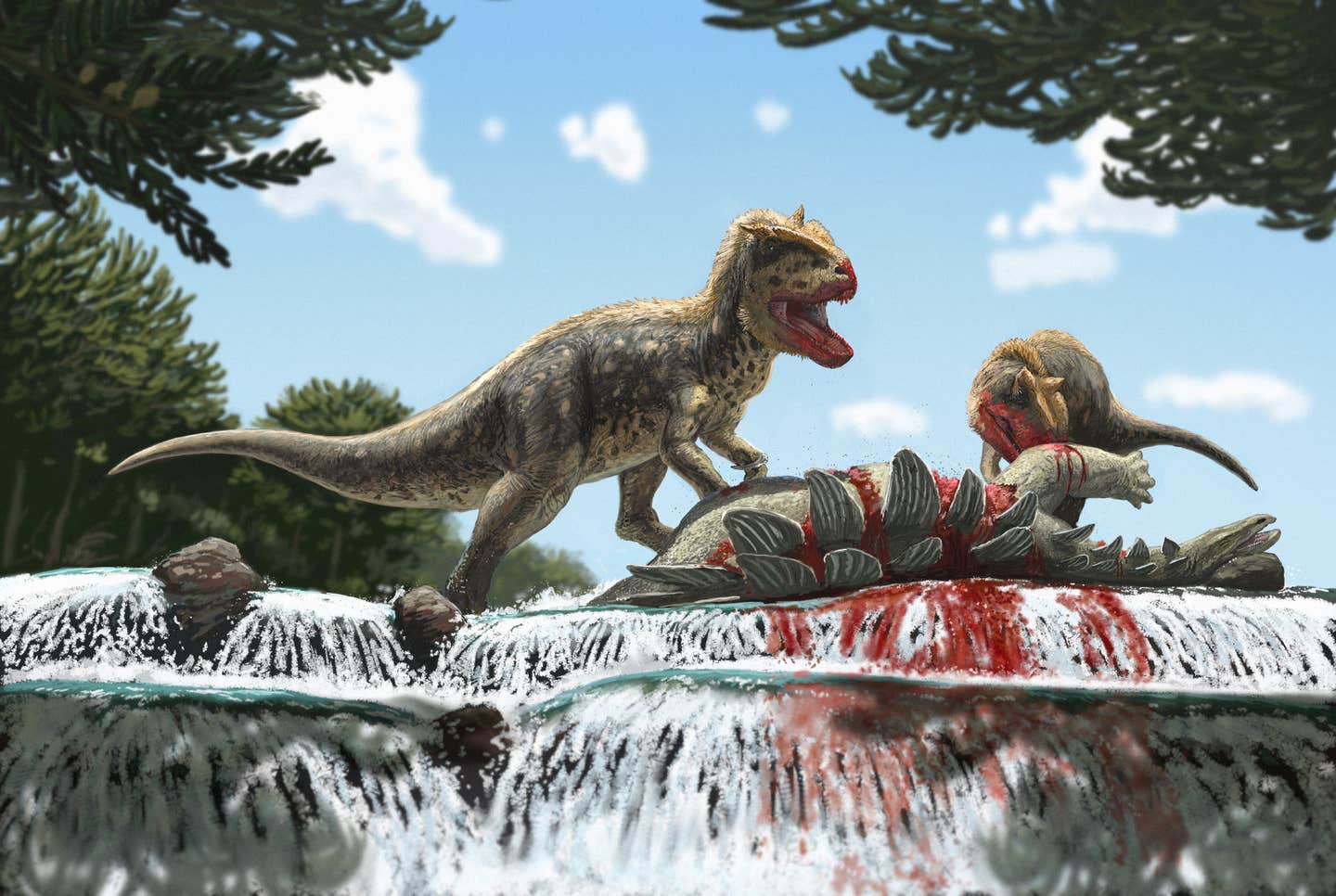Archeologists discover new gigantic prehistoric predator
The discovery of Alpkarakush kyrgyzicus, the first theropod dinosaur found in Kyrgyzstan, unveils new insights into Jurassic predators and their spread across Central Asia.

Reconstruction of Alpkarakush kyrgyzicus. (CREDIT: Joschua Knüppe)
Theropod dinosaurs are a significant group, encompassing some of the most famous predators like Tyrannosaurus, Allosaurus, and modern birds.
These creatures roamed the Earth during the Mesozoic Era. Much like lions are native to Africa and tigers to Asia, dinosaurs were regionally distributed. Allosaurus thrived in North America and southwestern Europe during the Jurassic period, while Metriacanthosaurs dominated China.
However, the vast area between Europe and East Asia has long been a blank spot in paleontological records—no large Jurassic predators were known from this region until now.
In a groundbreaking discovery, paleontologists have unearthed Alpkarakush kyrgyzicus, the first theropod dinosaur found in Kyrgyzstan. The initial discovery was made in 2006 by Kyrgyz palaeontologist Aizek Bakirov in the mountainous desert near Tashkumyr, in western Kyrgyzstan.
The fossils were embedded in the Balabansai Formation, a rock layer dating back to the Middle Jurassic period, approximately 165 million years ago.
Related Stories
Over several excavations between 2006 and 2023, a wealth of skeletal remains was uncovered. These include skull bones, vertebrae, fragments of the forelimbs and shoulder girdle, and almost the entire pelvic girdle and hind limbs. The recovered bones belong to a predatory dinosaur that was between eight and nine meters long.
This new genus and species display previously unknown features. One of its most distinctive traits is an exaggerated "eyebrow" on a skull bone behind the eye, suggesting the presence of a horn. Unique features also appear on the dorsal vertebrae and femur, making Alpkarakush kyrgyzicus stand out among known theropods.
Through comparisons with other theropods, scientists determined that Alpkarakush kyrgyzicus belongs to the metriacanthosaurids, a group of large predators that lived in East Asia. This suggests that metriacanthosaurids and other major theropod groups likely originated in Southeast Asia and then spread across Central Asia and into Europe. According to Prof.
Oliver Rauhut from the Bavarian Collection of Paleontology and Geology in Munich, “Although the affiliation of Alpkarakush with the metriacanthosaurids is not necessarily a surprise, this discovery closes a huge gap in our knowledge of the Jurassic theropods. It leads us to important new insights into the evolution and biogeography of these animals.”
At the same excavation site, paleontologists found remains of a second, smaller specimen of Alpkarakush kyrgyzicus. An analysis of the bones showed that the larger individual was nearly an adult, about seventeen years old and likely sexually mature, while the smaller specimen was a juvenile. This hints at the possibility of a parent traveling with its offspring 165 million years ago.
To ensure the preservation and accessibility of these fossils, the team created digital photogrammetric 3D models of the bones. Dr. Oliver Wings, Director of the Bamberg Natural History Museum and co-author of the study, explained, “These models are now available online and allow researchers worldwide to carry out follow-up studies and make 3D prints.”
The name Alpkarakush kyrgyzicus pays homage to Kyrgyz mythology. In the epic of Manas, Alpkarakush is a giant bird that helps heroes during critical moments. The species name, "kyrgyzicus," refers to the Kyrgyz Republic, the country where this new dinosaur was discovered.
Excitingly, there are plans to exhibit the original bones and a reconstruction of Alpkarakush kyrgyzicus in the National Historical Museum in Bishkek. If sufficient funding can be secured, this would mark the first time an original dinosaur skeleton is displayed in Kyrgyzstan.
Note: Materials provided above by The Brighter Side of News. Content may be edited for style and length.
Like these kind of feel good stories? Get The Brighter Side of News' newsletter.
Joshua Shavit
Science & Technology Writer
Joshua Shavit is a Los Angeles-based science and technology writer with a passion for exploring the breakthroughs shaping the future. As a co-founder of The Brighter Side of News, he focuses on positive and transformative advancements in AI, technology, physics, engineering, robotics and space science. Joshua is currently working towards a Bachelor of Science in Business and Industrial Engineering at the University of California, Berkeley. He combines his academic background with a talent for storytelling, making complex scientific discoveries engaging and accessible. His work highlights the innovators behind the ideas, bringing readers closer to the people driving progress.



